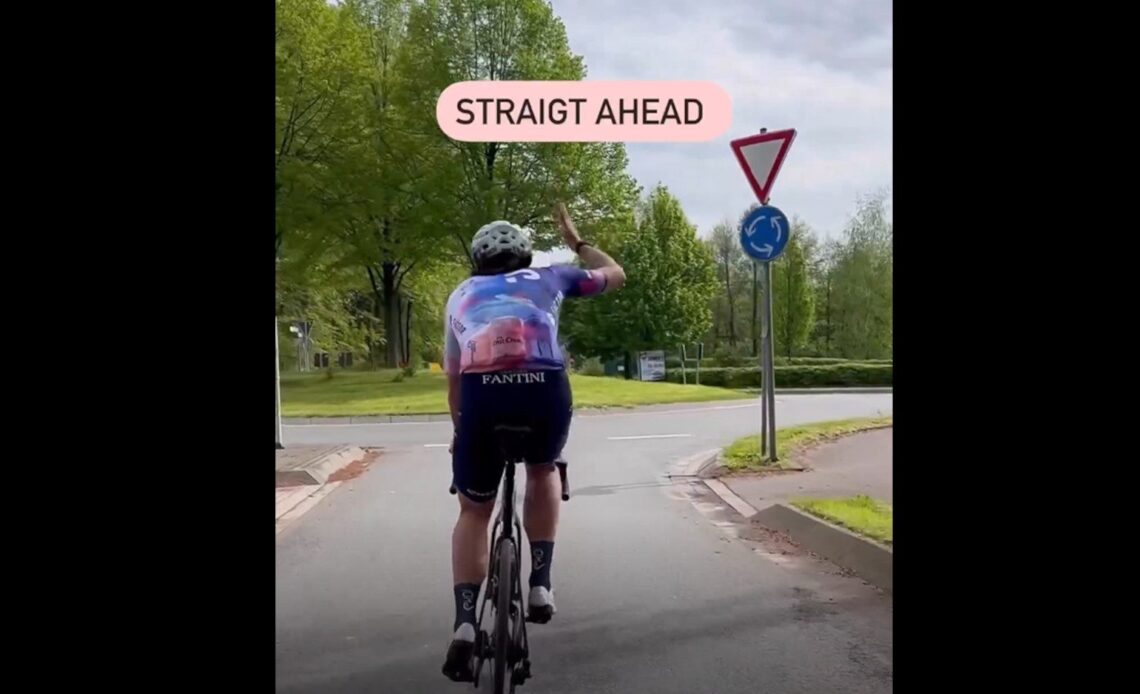Israel-Premier Tech’s Rick Zabel created a video to demonstrate hand signals for cyclists and it received a great response. The German rider posted a video on Instagram with the various gestures cyclists make to let others know what they are doing.
Whether it’s a left turn, a right turn, straight ahead or warning up an upcoming obstacle, Zable gives a great summary of things all cyclists should know.
Different opinions about signalling on a bike
Son of the famous sprinter, Erik, Rick’s video was well-received. Phillippe Gilbert did make a joke about the video. “Thanks for showing me that, I never saw that before. I learned something,” the former world champ quipped.
Some commenters didn’t like that Zabel did a simpler version of some of the signals. “Awesome message but pretty sure you only signal with your left hand and straight arm means left and bent 90 degrees means right,” Kieran Wood posted.
Instead, Zabel simply uses his left hand stretched out to mean turning left, and his right outstretched to mean right. Many cyclists have suggested that this updated form of signals is better. In fact, the origin for signals used on bikes comes from early automobiles, before proper turn signals were invented.
Origins of bike signals rooted in motor vehicles
“The old-school bicycle signal has roots that reach back to the earliest days of motorized transportation,” Peter Cheney wrote in the Globe and Mail. “Early automobiles didn’t have turn signals. They couldn’t reach across the car to stick their arm out the passenger window, so all signals had to be performed with the left arm (in countries where they drive on the left side of the road, such as Britain, drivers used their right arm instead.)”
Advocates have pushed for an update to the modern signal, saying that many motorists are confused by the bent arm, and simply stretching arms out is better.
Check out the explainer below.
Click Here to Read the Full Original Article at Canadian Cycling Magazine…

